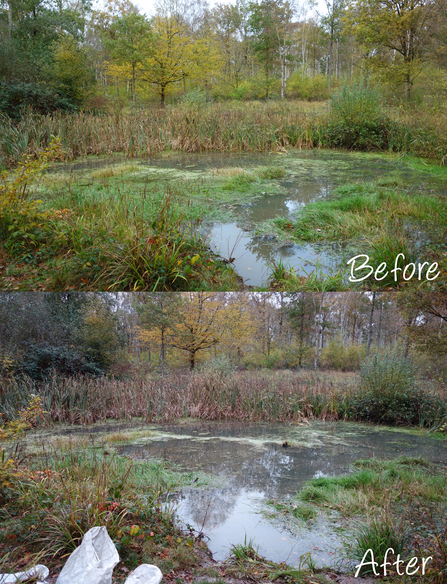Ponds are such an exciting and valuable habitat, harbouring a mysterious world full of rich biodiversity beneath the surface. After getting involved with the Ice Age Ponds project at Herefordshire Wildlife Trust over summer, I certainly have established a slight bias for ponds.
Recently, we visited a pond at Trench Wood that was covered in dense mats of the invasive species Crassula helmsii (New Zealand pygmyweed). This is a perennial succulent plant native to New Zealand and Australia but here it is a species of concern as it grows from tiny fragments, spreading readily between ponds and generating dense vegetation that reduces biodiversity and decreases water quality. The leaves of the plant do not provide an optimum environment for the development of great crested newt eggs (a protected species) and the absence of their preferred plant species causes reduced breeding success. It can also be very difficult and expensive to control.


